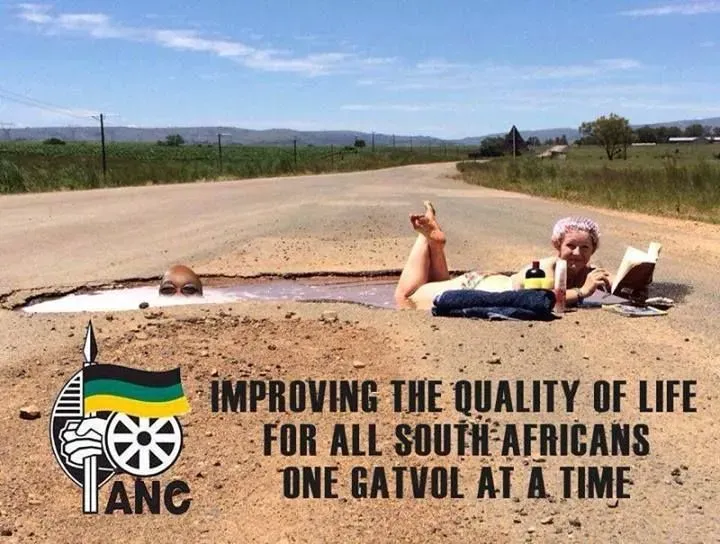
In her insightful examination of the South African response to the departure of the so-called ‘59ers,’ Joy Owen illustrates the complexities of national identity and shared experiences within a diverse society. Seated in a Bloemfontein restaurant one Tuesday evening, Owen reflects on the controversy surrounding the emigration of Afrikaner migrants who have fled to the United States, sparking both laughter and introspection among those left behind. Her narrative underscores a distinctive South African humor that serves as both a coping mechanism and a means of exploring deeper issues of belonging, loss, and collective identity. Through laughter, social media discourse, and heartfelt conversations, Owen captures how humor bridges divides, allowing South Africans to confront their shared past and ponder the implications of those who choose to leave, while simultaneously affirming their interconnectedness in a post-apartheid landscape.
The Role of Humor in South African Identity
In South Africa, humor serves as a vital tool for coping with the complexities of identity amidst a highly stratified society. The shared laughter surrounding the “Great Tsek” effectively illustrates how South Africans utilize humor not just for entertainment, but as a means to navigate their collective grievances and historical contexts. Engaging in this form of expression helps bridge social divides, enabling diverse groups to co-create an understanding of what it means to be South African, transcending barriers of race, class, and historical trauma. By embedding humor into public discourse, South Africans assert their resilience and maintain a communal bond, enabling them to confront painful realities without losing their cultural identity or humanity.
This intermingling of humor and cultural response can be observed in everyday settings where South Africans gather, be it in taxis, lecture halls, or over a Sunday braai. In these informal spaces, jokes about the 59ers reflect more than simply an event; they open discussions regarding the country’s socio-political climate and the anxieties surrounding migration and belonging. For instance, the casual banter about the 59ers leaving the country serves as both a critique and reflection of national sentiments, often revealing deeper insecurities and a profound yearning for solidarity among South African communities.
Emigration and Identity: The Case of the 59ers
The departure of the so-called 59ers brings to the forefront pressing questions about South African identity and belonging. Their exit, branded as a ‘Great Tsek’, symbolizes both a rejection by those who remain and a self-exiling response by those who leave. This duality emphasizes the complexities of national identity within a context of historical disenfranchisement and migration. The seeming humor around their departure masks a collective sorrow and anxiety among those who feel left behind, raising awareness of a shared history that cannot be easily dismissed or forgotten.
Moreover, responses from various South African citizens, particularly those like M, reveal a deeply empathetic perspective that transcends racial boundaries. The acknowledgment that 59ers face challenges in the United States prompts discussions on the fluidity of identity, suggesting that even among those who previously held privilege, there remains a fundamental connection to the South African experience. This relationship complicates the narrative of emigration; despite their choices leading them away from home, they still evoke concern and discussion within the very fabric of South African society.
Navigating Historical Legacy and Future Possibilities
Joy Owen’s narrative expertly connects the ongoing effects of colonialism and apartheid with contemporary discourse on identity and belonging. The insights from her son’s reflections demonstrate a hopeful evolution in understanding, suggesting that new generations may view South African history through a lens that transcends binary notions of race and culpability. This forward-thinking perspective emphasizes the ongoing struggle for collective healing and reconciliation, ushering in a new chapter where all citizens contribute to redefining what it means to be South African.
The legacy of South Africa is undeniably complex, filled with rich histories and narratives from various cultural backgrounds. As citizens collectively engage in firstly acknowledging their pasts, they pave the way for future dialogues. The portrayal of emotional complexities associated with the 59ers’ departure invites broader societal conversations that hinge on shared humanity, resilience, and collaboration. Ultimately, it becomes evident that while pain and alienation are part of the narrative, the shared journey toward a more inclusive and equitable future fosters hope amid uncertainty.
In summary, Joy Owen’s exploration of South Africans’ reactions to the departure of the 59ers reveals a rich tapestry of humor, identity, and collective memory that transcends racial and cultural divisions. The jovial yet poignant phrase “Great Tsek” encapsulates both a sense of loss and resilience among those who remain, as it simultaneously critiques and reflects on the historical context of migration and rejection in South Africa. Amidst laughter, there lies deep concern for the well-being of the emigrants, highlighting an intrinsic connection that binds all South Africans regardless of their ethnic backgrounds. Owen illustrates how this shared identity and humor serve as a coping mechanism, enabling South Africans to process their complex histories and envision a future characterized by inclusivity and mutual support. Ultimately, the narrative makes it clear that the journey to reshape South Africa is a collective endeavor, requiring empathy and a recognition of individual experiences within the broader societal framework as the nation continues to grapple with its past while striving for a unified future.






